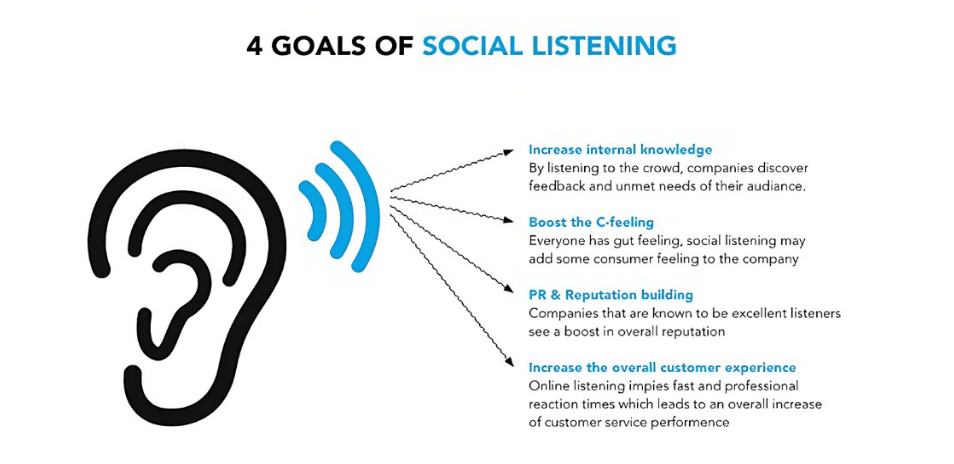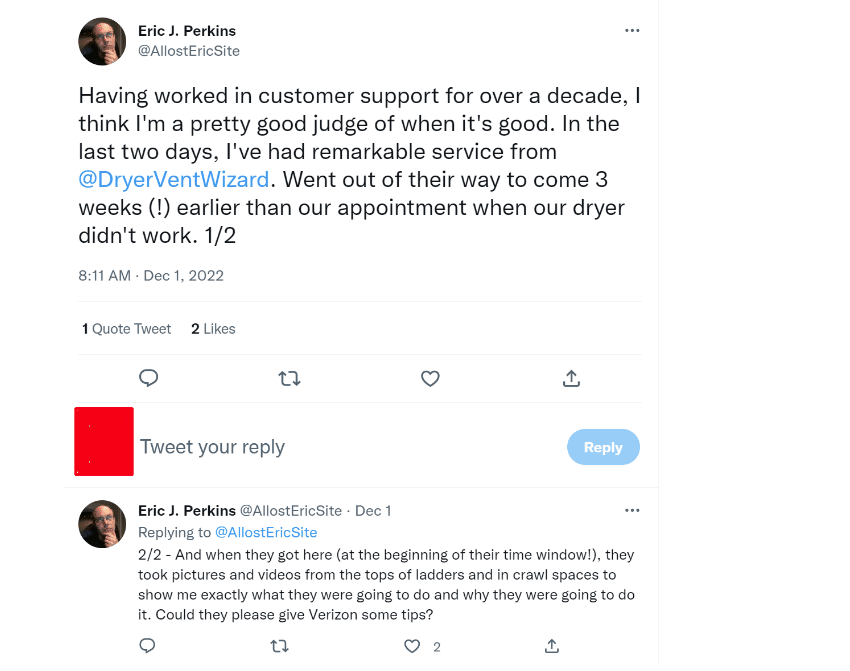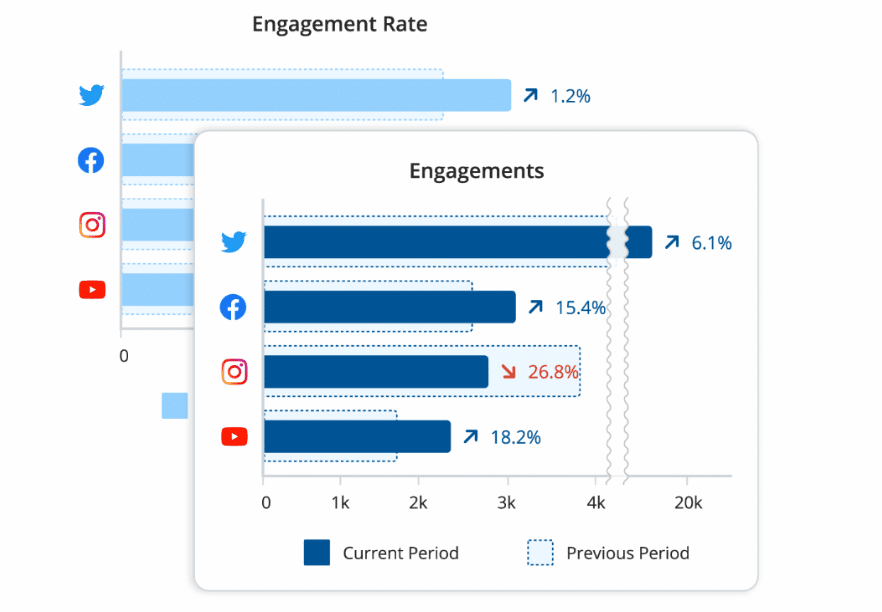In many ways, PR strategists and parents are alike. Sure, their intended audiences might differ (for parents, it’d be their children, and for PR strategists, it’d be their clients). But they both want to know the answers to questions like:
- Where’s my intended audience hanging out?
- Who are they hanging out with?
- What are they saying?
- Do the conversations concern me? If yes, how?
- Why are they having these conversions?
While parents may have to rely on some detective skills to get answers to these questions, PR strategists thankfully have social listening tools like Hootsuite, HubSpot, Social Sprout, and more that might help them get the right answers.
While these tools will provide strategists with exceptional insights, there’s much left to be explored regarding what you can do with these insights. But one sure-shot way these insights will help you is by enhancing your brand’s awareness.
So, let’s explore how you can use social listening tools to improve your brand’s awareness and image.
How can you use social listening tools to enhance your brand’s image?
1. Create a more enjoyable experience for the audience
There’s no denying that customers love personalized experiences—in fact, over 62 percent of your prospects expect you to create a personalized experience.
And there’s no wonder why lead tracking and automation services like LeadsBridge have seen such positive reviews from marketers. Because they’re a critical piece to the puzzle for understanding customer data and helping businesses target their audience accordingly.
So, wouldn’t you agree that if sales teams could personalize their pitches, they’d get a better response? What about customer success teams—wouldn’t it be better if they could predict customers’ queries and present solutions accordingly?
For example, if the conversation is about keto diets, wouldn’t it be better to know that your target audience is interested in keto diets over paleo diets before you create ad copies to target them?
The same goes for any other business—take a digital pet management business, for example. Wouldn’t they, too, benefit from knowing what customers are talking about in the pet care industry so that they can improve their services?
You’re able to deliver on the philosophy of solution selling when you leverage social listening tools.
Why? Because you understand what makes your customers buy, what their concerns are about your product, what they’d hope you’d do better, and other such queries—it always pays off to stay up-to-date on the gossip about your product/services.
Have your sales, marketing, and customer success teams use notion widget tools to keep track of important trends and create campaign responses accordingly.
For example, you can stay updated on trends with the Google trends widget, keep track of everything on the whiteboard widget, and then use the Pomodoro widget to avoid missing key deadlines.
2. Improve your image in front of your target audience
When it comes to sales, the value of your company is your biggest goodwill. What differentiates Wet n Wild from E.l.f (although both are drugstore makeup brands) is that the latter has a better-perceived value attached to it. So, how do you enhance the value of your product? There are two ways to achieve that:
- Improving the product
- Enhancing the image of your product
We already discussed how social selling could help brands improve their product, but here are a few ways it’ll help them improve their brand’s image:
It’ll help improve customer satisfaction
We know that in today’s day and age, social media is a powerful tool—it’s a place where most customers go to research your brands.
So, businesses can leverage social listening tools to understand what conversations are happening about their product. Engaging in active listening can help deliver more powerful, prompt, and personalized responses—all of which will help improve customer satisfaction.
One might wonder how a satisfied customer can help you? Well, for one, they’ll tell other people about it. For context, happier customers are 76 percent more likely to recommend your brand.
And they’ll put it on blast, too. 36 percent of customers agree that they’ll share their experiences with customer service on social media.
Even older studies, such as the ones conducted by Statista and Microsoft, will attest to the fact that customers love praising brands on their socials after a positive experience.
So use this to your advantage. Find free templates online to create posters of the customer testimonials you’ve received. Trust us, more than 71 percent of customers will be influenced by it.
It’ll help you navigate the PR crisis
More often than not, conversations that don’t happen in front of your face will happen behind your back. Although it’s always recommended that you protect yourself from bad actors through DDoS protection and other security measures, sometimes, the bad actor for your business may very well be you.
Understanding how your customers tick at a particularly vulnerable time or with a vulnerable topic will allow you to address those issues better to prepare for the crisis accordingly.
3. Hire better talent
Social media isn’t a new tool for finding talent—in fact, more than 67 percent of businesses use it to find talent for their organization. What social listening tools will help you with is finding the right talent. You can collect relevant data from your software to help you understand if the people you’re looking for are the right fit.
How to find the right talent, you ask? Look for keywords that you might otherwise post in your job description, like volunteer, work from home, or the name of your industry.
You can also find out what the incoming talent looks for when finding new work opportunities (once you have that data, maybe you can look forward to altering your company culture a bit to suit the needs of your employees).
For example, they might want a 4-day workweek, unlimited PTO, competitive pay, longer maternity leaves, etc.
4. Give your competitors a run for their money
With social listening tools, you can’t only keep track of conversations happening about you, but you can also keep track of conversations happening about your competitors.
So, if you stay updated on those conversations, you can easily find your competitors’ at-risk customers and immediately target them.
Alternatively, you can also target those prospects who are in the middle of deciding which product/service in your industry to opt for and are looking for recommendations.
These tools can help find customers who are already ambassadors of your products—once you have that data, you can create relevant offers for them.
For example, suppose you see customers praising your product on social media. In that case, you can gift them with goodies or create micro-communities (e.g., Glossier has a Slack group of its top customers).
Doing so will make your customers champions of your product, and such micro-communities will also allow you to get honest feedback from the people who love your brand the most.
Another important feature of social listening tools is that they also analyze your competitors and allow you to correctly determine what steps to take to increase your brand awareness in the face of competition. They can also help you create competitive battlecards, because these cards also serve to show how your product stacks up against competitors and why it’s the best option.
5. Partner with the right people
We can’t have a conversation about social media without mentioning influencers. As it so happens, influencer marketing is a powerful strategy to convert customers. However, which influencer to collaborate with is the question of the hour.
Worry not, as social listening tools will help you find influencers who love your product or have mentioned it often. Once you have access to that information, you can create a shortlist of influencers you want to partner with.
Alternatively, you can also make your existing customers your brand ambassadors—we already discussed how existing customers (if met with a positive experience) would give you a shout on social channels.
Still, you can go one step further and create referral links for them. And if your relationship with them is solid, you can also ask for customer testimonials or user-generated content (UGC).
Find the right social listening tool
There are many social listening tools on the market, but the goal is to find the right one. For example, if we’d have three guesses, we’d say you want a tool that:
- Share an eagle’s eye view of what’s happening on your social channels in real-time.
- Provides you with actionable and constructive insights.
- Accessible and easy to use.







